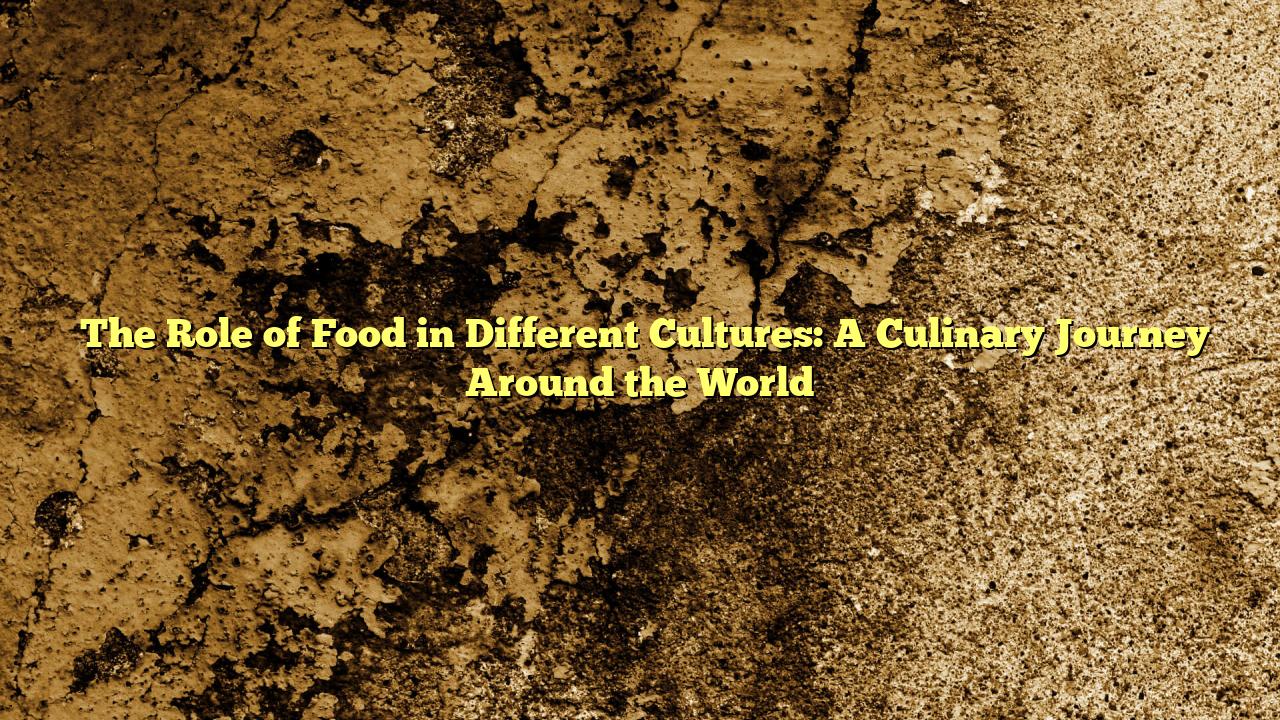Food is more than just sustenance—it is a reflection of history, geography, traditions, and cultural identity. Every region of the world has its own unique flavors, ingredients, and cooking techniques that define its culinary heritage. From toto slot in Africa to delicate sushi in Japan, food is a universal language that brings people together and tells the story of a society’s evolution.
In this article, we will explore the role of food in different cultures, the importance of traditional dishes, and how globalization has influenced food consumption worldwide.
Food as a Cultural Identity
Each country or region has its own distinct cuisine shaped by climate, agriculture, religion, and historical influences. Food is deeply tied to identity and traditions, and for many, eating a familiar dish can provide a sense of comfort and belonging.
For example:
● Italian cuisine is known for its pasta, pizza, and olive oil, which originated from a Mediterranean diet based on fresh and simple ingredients.
● Chinese cuisine emphasizes balance in flavors—sweet, sour, salty, bitter, and umami—with a variety of stir-fried, steamed, and braised dishes.
● Mexican cuisine combines indigenous ingredients like corn, beans, and chili peppers with Spanish influences, creating dishes such as tacos and tamales.
● Indian cuisine features aromatic spices like turmeric, cardamom, and cumin, used in dishes like curry, biryani, and samosas.
Traditional food is a way for people to stay connected to their roots, especially for immigrant communities. Dishes passed down through generations act as a reminder of home and preserve cultural identity in a rapidly globalizing world.
The Role of Food in Celebrations and Rituals
Food plays a crucial role in cultural celebrations, religious ceremonies, and festivals. Many traditions revolve around special meals that hold symbolic meanings.
1. Religious Significance of Food
Certain religions have dietary restrictions or rituals related to food. Some examples include:
● Islam: Muslims observe fasting during Ramadan, refraining from food and drink from sunrise to sunset, followed by an evening meal called Iftar.
● Hinduism: Many Hindus follow a vegetarian diet and avoid beef, as cows are considered sacred. Food is also offered to deities during religious ceremonies.
● Judaism: Jewish dietary laws (kosher) dictate what foods can be eaten and how they should be prepared. During Passover, foods like matzo are consumed to commemorate the Exodus from Egypt.
● Christianity: Many Christian traditions involve food, such as eating fish on Good Friday or preparing festive meals for Christmas and Easter.
2. Food in Festivals and Special Occasions
Cultural festivals and holidays often center around traditional dishes that symbolize prosperity, luck, or togetherness. Some notable examples include:
● Chinese New Year: Dumplings symbolize wealth, while sticky rice cakes represent growth and progress.
● Thanksgiving (USA & Canada): A feast of turkey, stuffing, and pumpkin pie brings families together to celebrate gratitude.
● Diwali (India): Sweets like laddu, jalebi, and barfi are shared to mark the festival of lights.
● Oktoberfest (Germany): Traditional Bavarian food such as pretzels, sausages, and beer are enjoyed during this festival.
Food traditions create lasting memories and foster a sense of unity among families and communities.
The Impact of Geography on Cuisine
The natural environment plays a major role in shaping a region’s cuisine. Climate, soil conditions, and proximity to water influence the availability of ingredients.
1. Coastal vs. Inland Cuisine
● Coastal regions rely on seafood as a primary protein source. Japan, Thailand, and Portugal, for example, have seafood-rich diets featuring dishes like sushi, fish curry, and grilled sardines.
● Inland areas often rely on grains, legumes, and meats from livestock. Mongolia, for instance, has a diet centered around dairy products and mutton due to its nomadic culture.
2. Agricultural Influence
Countries with fertile land, like France and Italy, produce high-quality wines, cheeses, and fresh produce, shaping their culinary traditions. Meanwhile, arid regions such as the Middle East incorporate preserved foods like dried fruits, spices, and flatbreads.
Globalization and the Changing Face of Food
With modern transportation and communication, food has become more globalized than ever. While this allows people to enjoy diverse cuisines, it also raises concerns about the loss of traditional food cultures.
1. The Spread of Fast Food Chains
American fast food chains like McDonald’s, KFC, and Starbucks have spread across the world, often adapting their menus to local tastes. For example:
● In India, McDonald’s offers the McAloo Tikki Burger (potato-based) instead of beef burgers.
● In China, KFC serves congee (rice porridge) alongside fried chicken.
● In France, McDonald’s includes croissants and macarons on the menu.
While fast food is convenient, it has also contributed to rising obesity rates and a decline in home-cooked meals in many countries.
2. The Rise of Fusion Cuisine
As cultures mix, so do their culinary traditions. Fusion cuisine blends ingredients and cooking styles from different regions, leading to innovative dishes such as:
● Korean tacos (Korean BBQ with Mexican tortillas).
● Sushi pizza (Japanese sushi toppings on an Italian-style crust).
● Ramen burgers (Burger patties sandwiched between ramen noodle “buns”).
While fusion food introduces creativity, some argue that it can dilute the authenticity of traditional cuisine.
The Future of Traditional Food
As globalization changes eating habits, there is a growing movement to preserve traditional food cultures. Many organizations and chefs are advocating for:
● Farm-to-table dining: Encouraging the use of fresh, locally sourced ingredients.
● Slow food movement: Promoting traditional cooking methods over fast food.
● Food tourism: Encouraging travelers to experience authentic local dishes instead of commercialized options.
Additionally, as concerns about sustainability grow, more people are embracing organic farming, plant-based diets, and food waste reduction. The challenge is to balance modern convenience with cultural heritage while ensuring food security for future generations.
Conclusion
Food is an essential part of cultural identity, shaping traditions, celebrations, and daily life. While globalization has introduced new flavors and fusion cuisines, it has also challenged the preservation of authentic food traditions. By understanding and appreciating the cultural significance of food, we can continue to celebrate the diversity of global cuisine while embracing sustainable and ethical food choices.
Whether it’s enjoying a home-cooked meal, exploring street food markets, or dining at a Michelin-star restaurant, food remains a powerful force that connects people across borders and generations.
The Role of Food in Different Cultures: A Culinary Journey Around the World



